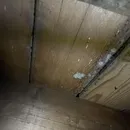Crawl space airsealing Plank subfloor in 100 year old house
I am working on my crawl space in an old house. The subfloor is plank boards with hardwood directly over top. I am planning to encapsulate the crawl space, new vapor barrier and xps foam on rim joist and walls.
Should I air seal the gaps in the plank subfloor?
I am considering the following options:
Spray foam gaps, caulk gaps, or use eps foam and spray foam foam board in place.!
please let me know what the best method or recommendations would be?
thank you,
GBA Detail Library
A collection of one thousand construction details organized by climate and house part










Replies
Craig,
If you insulate, air-seal and condition the crawlspace, it becomes part of the house and you don't need to air-seal in between it and the rooms above. Even conditioned crawlspaces are never quite as clean as the rest of the house, so it's nice not to share air between the two, but what you have between the two now will do fine. I'd leave the sub-floor alone.
Thank you. If I did not condition the crawlspace what would be your recommendation?
Also my crawlspace has very little height two (2) or less feet. If I only insulate the walls and not subfloor floor, would there be any issues?
Craig,
There are really only two types of workable crawlspaces: Vented and conditioned (sometimes misnamed un-vented). Once you decide to remove the vents, air-seal and insulate, you need to condition the space, which means controlling the humidity and supplying heat. What you are doing is moving the boundary of the house enclosure from the first floor to the walls and floor of the crawlspace. Since that first floor is no longer part of the house enclosure, it doesn't need to be insulated.
This blog describes things much better than I have: https://www.greenbuildingadvisor.com/article/building-an-unvented-crawl-space